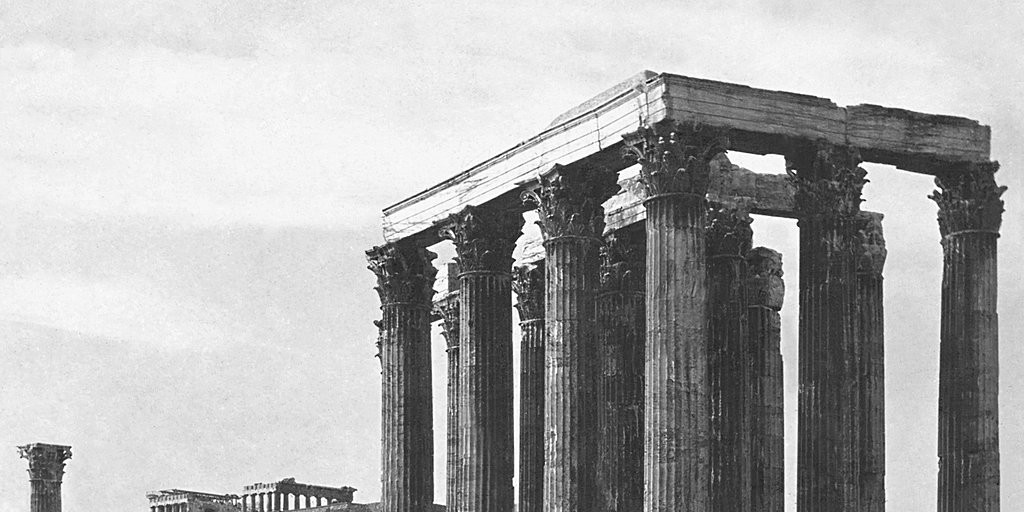General News
Meropi Kyriacou Honored as TNH Educator of the Year
NEW YORK – Meropi Kyriacou, the new Principal of The Cathedral School in Manhattan, was honored as The National Herald’s Educator of the Year.

ATHENS – Film maker Maria Iliou’s gorgeous and fascinating documentary Athens from East to West 1821-1896 reminds that cities can have stories as compelling as those of individuals.
Few cities – all have their moments in the sun and vicissitudes – ever achieved the glory and renown of Athens from Classical to Roman times, but the ultimate crash was profound. There were partial recoveries in Middle Byzantine, Frankish, and even Ottoman times, but the city was a pale ghost of its ancient glory, a small town or a large village of 10,000 people when the modern Greek state was born.
Iliou’s film, which recently premiered at the Benaki Museum’s 138 Piraeus Street, uses wonderful paintings, arresting examples of early photography, and the testimony of distinguished scholars to describe not only a resurrection, but the efforts to blend (or consciously ignore and suppress) elements of the past with modern realities.
The commentators noted that the first post- independence visitors from Europe were disappointed, but preserved comments of travelers later in the 19th century reveal delight in the rapidly developing city, a fact partly owing to the generosity of wealthy Diaspora Greeks – who also helped finance the war of independence – wanting a capitol of which they could be proud.
Another interesting note is that modern Athenians’ love affair with the seashore and their very connection with the Port of Piraeus began with the first railroads in the late 19th century.
The commentators nicely covered the broad sweep of cultural history – most notably Athens’ transformation from an Ottoman, Oriental milieu to a Western and European capital – and political history. The later includes the promising start and precipitous collapse of the popularity of its first King, the autocratic Otto of Bavaria, who built the imposing palace that now houses Parliament and other notable buildings, the much appreciated building and cultural programs of the much more circumspect King George, and the ambitious and necessary but costly infrastructure projects of Harilaos Trikoupis that culminated in bankruptcy.
As Dr. Alexander Kitroeff of Haverford College noted, however, just a few years after the financial collapse, the Olympic games triggered another burst of pride and development in a city whose great monuments had by then finally been uncovered, enabling its citizens, “to look to the future with confidence.”
The city’s development, combining the ancient, the neoclassical, and the modern, entailed losses too. Only half the Byzantine churches were saved, a number of which, like the Little Metropolis and the Kapnikarea, are now beloved of residents and tourists alike. Dr. Emmanouil Korres, distinguished architect and scholar of the Acropolis restorations, noted that while the authorities tried to save the best examples, contrary to political mythology, it was the Greeks, not the Bavarians, who were anxious to scrape away the non-classical heritage, including the Orthodox monuments.
Viewers of the film were told of the battle that formed over the very ground plan of the new capitol. While the neoclassical trio of University, National Library, and Academy buildings, and the later Cathedral of Athens provided a burst of grandiosity, plans for boulevards ran afoul of the owners of property that would have been seized. It was pointed out, however, that the avenues that led to those two sites did become the religious and cultural axes of the city.
Guests at the premier delighted in the paintings featured in the film. Many were by Ireland’s Edward Dodwell, who was in Athens in March 1805 when Elgin’s wrecking crews were on the Acropolis, an eyewitness who drew scenes of the pillaging.
Born of a discussion between Angelos Delivorrias and Iliou, the idea to feature Athens in a documentary evolved into a project comprised of five films and complementary exhibitions that take the story into the present, with Iliou, the director of the film and curator of the exhibition, working with Kitroeff, who is the historical consultant.
The visual material comes from archives in Greece, Europe, America, Canada, and Australia and in the film it is accompanied by the sounds and music of their eras. The narrators are Kitroeff, archaeologist Jim Wright, journalist Nikos Vatopoulos as well as the historians Leonidas Embiricos, Christina Koulouri, Sir Michael Llewellyn Smith, and Eleni Bastea. The music is by Nikos Platyrachos, Aliki Panagi did the editing, and Buddy Squires the cinematography.
The sponsors include the Jaharis Family Foundation, the Pindaros Foundation, Daphne and George Hatsopoulos, the Koumantaros Foundation, the Moscahlaidis Foundation, and an anonymous donor.
The images used in the film are on exhibition through April 26 at the main Benaki building, 1 Koumbari St.
NEW YORK – Meropi Kyriacou, the new Principal of The Cathedral School in Manhattan, was honored as The National Herald’s Educator of the Year.

MELBOURNE, Australia (AP) — More than 100 long-finned pilot whales that beached on the western Australian coast Thursday have returned to sea, while 29 died on the shore, officials said.
On Monday, April 22, 2024, history was being written in a Manhattan courtroom.
PARIS - With heavy security set for the 2024 Paris Olympic Games during a time of terrorism, France has asked to use a Greek air defense system as well although talks are said to have been going on for months.
PARIS (AP) — Paris has a new king of the crusty baguette.
WASHINGTON (AP) — A tiny Philip Morris product called Zyn has been making big headlines, sparking debate about whether new nicotine-based alternatives intended for adults may be catching on with underage teens and adolescents.